ref:Tom
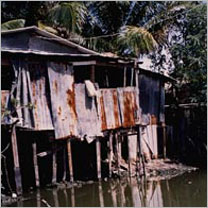 |
Communities clean up of Klong Samrong leads to redevelopment and
network building in Songkla: In a flat-bottomed wooden boat, it takes
about an hour to paddle along the briny four-kilometre length of Klong
Samrong in Songkla, from the inland sea on one side, to the South
China Sea on the other. Besides houses, factories and tidal flats,
you pass five poor settlements, which have been home to fishermen,
net weavers, dockyard labourers and vendors for half a century. These
settlements had long been accused of polluting the klong, and ten
years ago, plans were announced to evict them. The people got together and with help from the Southern Urban Community Development Project (NGO) formed a federation to negotiate alternatives. By Demonstrating their commitment to keeping their klong clean and improving their settlements, all five communities were able to change their future, consolidate their right to stay, trigger other community developments and set a strong precedent for other klong-side communities all over Thailand. Here’s what Songkla’s klong-keepers did: |
1991- research : First they asked why is the klong dirty? And found factory pollution and clandestine dumping of solid waste all along the klong. What could communities do to clean it up, and what would the city and other actors have to do?
1991- first klong cleaning: Anybody living on the klong knows that klong cleaning is not a one time proposition, but has to be done regularly. In Songkla the communities get together once a year to remove garbage from Klong Samrong, clean the banks and pull out the plants which choke the water flow. They make it into a gala, with banners, feast and press coverage. It’s a good start, but the pollutants in the water and silt at the bottom requires help from the city.
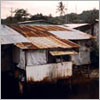 |
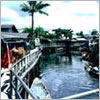 |
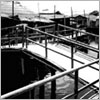 |
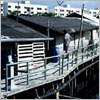 |
1992-95- reblocking : Earlier, houses, built right over the water made it hard for the cities de silting raft to dredge the klong regularly, so the communities moved their houses back, in order to maintain the required 8 metres minimum open distance across the klong. They also demolished toilets that drained directly into the klong and built new ones, with proper septic tanks, at least 3 metres inland.
1995 – built wooden walkway: To improve access to their houses, the people in the Bor –wa community built wooden boardwalks along both sides of the klong. The walkway cost just 500, 000 baht, and was soon flowed by a 2 storey timber and bamboo community centre, supported by the LIFE Programme.
1997 – community planning : Bor-wa was the first community to go a step further and prepare a full redevelopment plan. During evenings sessions in the new community centre, with help from CASE, residents mapped out their houses and used coloured tapes to plan pathways, fire access, drainage, water taps, electricity, garbage collection points, lamp posts and trees. The other settlements got wind of this and pretty soon; Bor-wa was helping the other Klong communities prepare similar redevelopment plans.
1997 - community plans officialised : As evidence of the transformation in the klong communities relationship with the city, these people-generated redevelopment plans were incorporated in the official municipal plan, and became the basis for subsequent NHA – built improvements to the Klong Samrong settlements in 1997.
Patama's diary of workshop process!
In the process of design and discuss withthe people
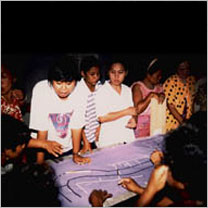 |
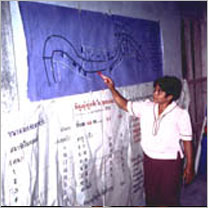 |
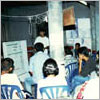 |
 |
 |
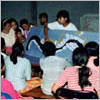 |
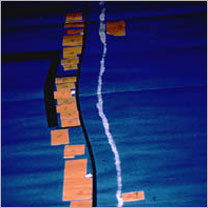 |
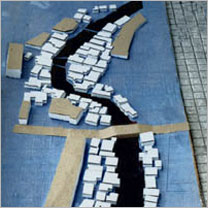 |
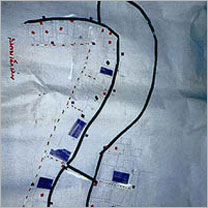 |
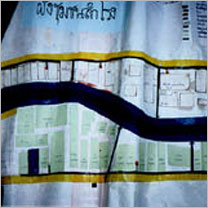 |